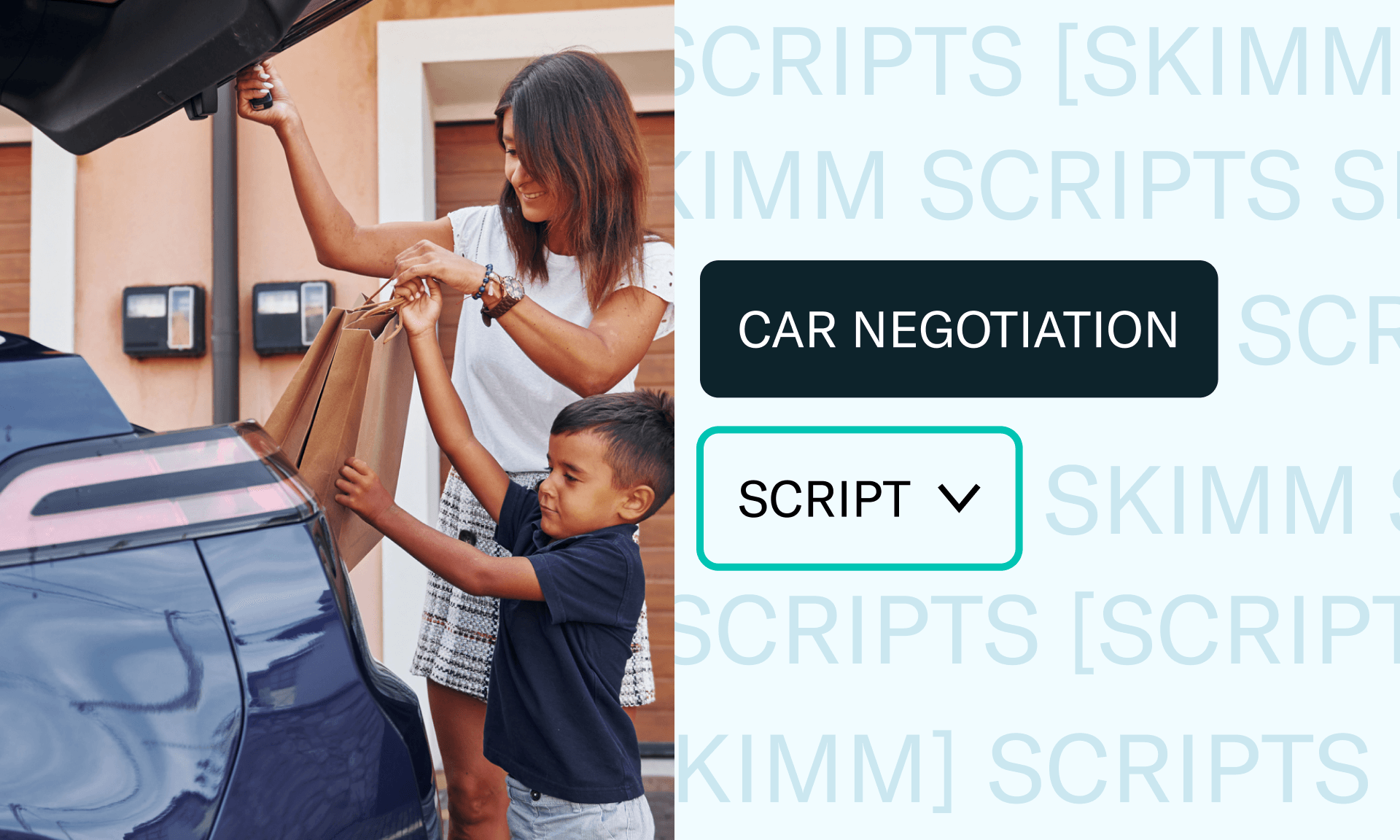Buying your dream car is one of the most exciting — and most expensive — purchases you’ll ever make. But no matter how happy you’re feeling after the test-drive, you can’t let your emotions guide your negotiation. Because that could cost you big-time in the long run (think: a high interest rate on your loan and no new car freebies). The best way to score a good price is to do some research before heading to the dealership. Don’t forget: This is a biz transaction.
How to prep for a car purchase
Before you head to the showroom floor, it’s good to know all of your options. That means taking time to learn what you qualify for financing-wise and how much your car should ideally cost.
Know your credit score
This will give you a good idea of what a fair interest rate on your auto loan would be. Hint: Generally, a good credit score = a lower rate. Knowing your score ahead of time can help you avoid any unpleasant surprises once you make it to the dealership.
See how much you qualify for
Reach out to a few banks and lenders to find out how much you could get approved for. If you’re trading in your old car, this is also a great way to gauge trade-in value. Bonus if you can walk away with a pre approval.
Read the reviews
Before you choose a dealership, check online reviews to learn about others’ experiences with them. Odds are you won’t see all five-star reviews, but considering the amount of negative reviews can help weed out the dealers that might not be the greatest.
Find your trade-in value (if applicable)
A pricing guide can give you a quick estimate of how much you can expect to get for your trade-in. Think: Kelley Blue Book, or shop around with online retailers.
When you make it to the dealership
Remember, this is a business deal. And your most powerful negotiation tactic is your willingness to walk away if the deal is unfair. Even if you just test-drove the car of your dreams. You deserve a price that fits your budget.
If the salesperson asks…
“What’s your ideal monthly payment?”
Respond with: “I don’t have a payment in mind, but I would like to know the total cost of the car, including fees and taxes.”
Car dealerships know how to get you to a monthly payment within your budget...without shaving down the total car cost.
“Would you like gap insurance?”
Say: “No, thanks.”
Even if you're interested in the additional coverage, chances are you’ll get a much lower price if you get it from an insurance company instead of a car dealership. If the salesperson insists that gap insurance is required, consider it a red flag.
Or says…
“The sticker price is the price.”
Ask: “Is this a no-haggle dealership?”
If the salesperson says yes, weigh your options. It might be worth it to try a few more dealerships. If the salesperson says no, offer a lower price. Some dealerships use no-haggle pricing, but in many cases, the sticker price (aka MSRP) is the manufacturer’s suggested retail price. Which means it’s almost always up for negotiation.
“I’ll have to talk this over with my finance manager.”
Say, “OK, sounds good. I’m gonna browse a little more in the meantime.”
Take this as an opportunity to keep browsing the showroom. Sometimes, car dealerships use impromptu finance meetings as a way to create a level of impatience, which would make you more likely to take the next offer. Walking around shows the salesperson that you have the time to keep negotiating.
When you make it to the finance and insurance office
Once you score the price you wanted (or super close to it), the deal isn’t done just yet. Chances are the salesperson will send you to the dealership’s finance and insurance office, where the F&I manager will start to offer a few pricey add-ons just before you sign on the dotted line.
If the F&I manager asks…
“Do you want me to add an extended warranty?”
Say: “I’ll have to think about it.”
Especially if you’re buying a newer car, the vehicle is likely still under the factory warranty. But even if you’re going with an older car, the dealership might be one of the priciest options. FYI: You can usually add an extended warranty later.
If the F&I manager says…
“I can add key protection to save you money on a replacement in the future.”
Respond with: “I’d rather pass on the key protection.”
Yes, a key replacement can cost a few hundred dollars. But is it worth paying a few hundred now just in case you ever lose or break your key in the future? Probably not. If you think there’s a risk you’ll need a replacement later, go over options with your insurance company, a locksmith, or an automobile club.
Other add-ons that might not be worth the extra costs: Anti-theft products, maintenance plans, and paint and fabric protection.
theSkimm
Getting the keys to a new car is a great feeling. Navigating the car buying process? Not so much. But a little research before the big day can make things run a whole lot smoother.
Live Smarter
Sign up for the Daily Skimm email newsletter. Delivered to your inbox every morning and prepares you for your day in minutes.
